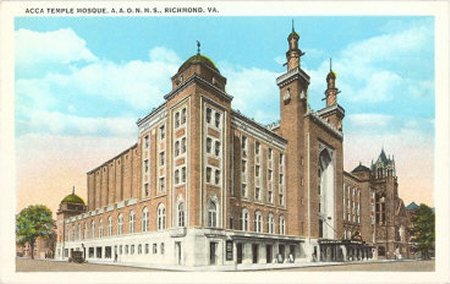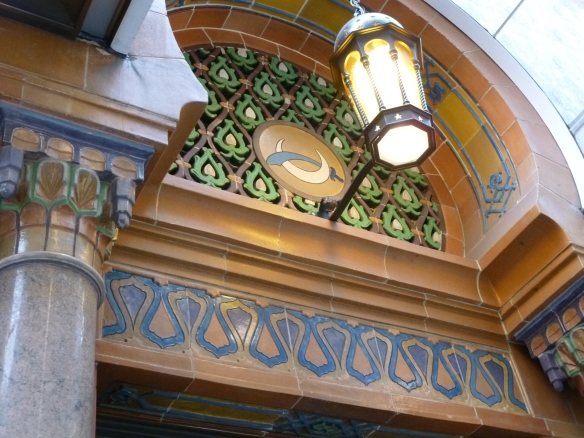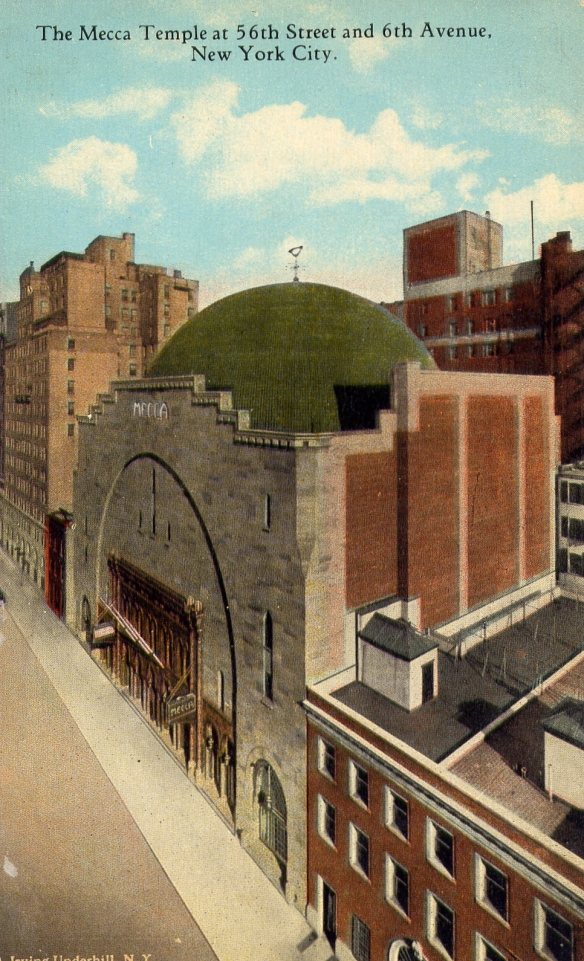In Richmond, Virginia there is “the Mosque” where for decades American music legends have played packed and rapt audiences. But it is “the Mosque” in name only and, in fact, it is no longer officially called that. Today it is known as the Landmark Theater, located in Monroe Park next to the campus of Virginia Commonwealth University. It began as a Shriner Temple, hence its original romanticized appellation of the Mosque. And much like the previously covered Mecca Temple in NYC, it too bears a distinctive Moorish Revival architectural style; domes, minarets, and arabesque motifs adorn the edifice.
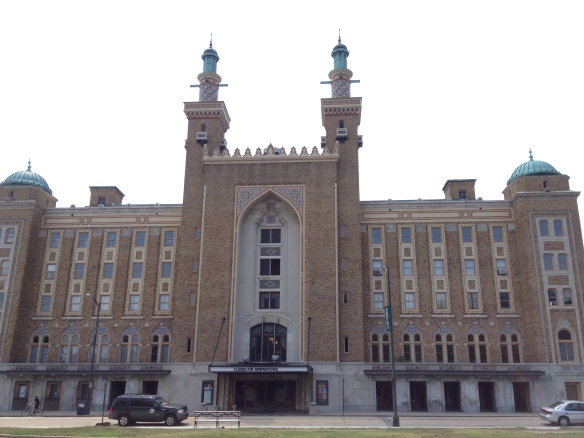 Built in 1926 the Mosque was meant to serve as the main temple of the Acca Shriners, the local Richmond branch of the Ancient Arabic Order of the Nobles of the Mystic Shrine. While the Acca Shriners are still active today, they lost the Mosque in 1935 because of financial difficulties and the city of Richmond eventually bought the property five years later in 1940. In the 1990s concerns from local Muslims prompted the city to change the name from the Mosque to the Landmark Theater. According to the Hampton Roads, VA newspaper Daily Press:
Built in 1926 the Mosque was meant to serve as the main temple of the Acca Shriners, the local Richmond branch of the Ancient Arabic Order of the Nobles of the Mystic Shrine. While the Acca Shriners are still active today, they lost the Mosque in 1935 because of financial difficulties and the city of Richmond eventually bought the property five years later in 1940. In the 1990s concerns from local Muslims prompted the city to change the name from the Mosque to the Landmark Theater. According to the Hampton Roads, VA newspaper Daily Press:
The city officially closed the building for renovation in 1994. And in 1995 the Mosque moniker was changed to Richmond’s Landmark Theater after area Muslims petitioned the City Council. They said mosque means “place of worship,” an inappropriate name for a building devoted to entertainment. (Pernell Watson and Elizabeth Joines, Daily Press, 14 April 1997)
 For its many years of service the Mosque was a prime venue for touring performers and has hosted such artists as Frank Sinatra, Elvis Presley, Jimi Hendrix, Duke Ellington, and Bruce Springsteen. In fact Sinatra, near the end of his life and career, suffered a fall on stage while at the Mosque (more information on all these performances can be found here). At present the Mosque/Landmark Theater is closed, but according to a recent article (John Reid Blackwell, Richmond Times-Dispatch, 12 July 2012) the space is currently undergoing major renovations and is slated to reopen as the Altria Theater in October 2013. The name change to Altria is due to the sponsorship of Altria Group, Inc. (formerly Philip Morris Companies, Inc., the parent company of the Virginia tobacco company Philip Morris).
For its many years of service the Mosque was a prime venue for touring performers and has hosted such artists as Frank Sinatra, Elvis Presley, Jimi Hendrix, Duke Ellington, and Bruce Springsteen. In fact Sinatra, near the end of his life and career, suffered a fall on stage while at the Mosque (more information on all these performances can be found here). At present the Mosque/Landmark Theater is closed, but according to a recent article (John Reid Blackwell, Richmond Times-Dispatch, 12 July 2012) the space is currently undergoing major renovations and is slated to reopen as the Altria Theater in October 2013. The name change to Altria is due to the sponsorship of Altria Group, Inc. (formerly Philip Morris Companies, Inc., the parent company of the Virginia tobacco company Philip Morris).
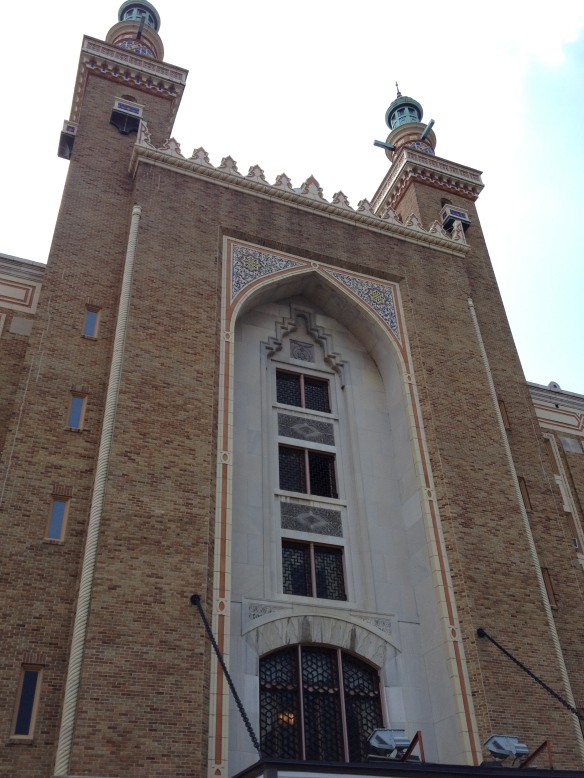 Notably, the building does not appear to have a plaque or sign designating it as a historic landmark. Perhaps this was an oversight on our part. In any case, let us hope the renovations do not dramatically change the distinctive designs adorning the building’s interior and exterior. More images of The Mosque can be found over on the appropriate gallery page.
Notably, the building does not appear to have a plaque or sign designating it as a historic landmark. Perhaps this was an oversight on our part. In any case, let us hope the renovations do not dramatically change the distinctive designs adorning the building’s interior and exterior. More images of The Mosque can be found over on the appropriate gallery page.

